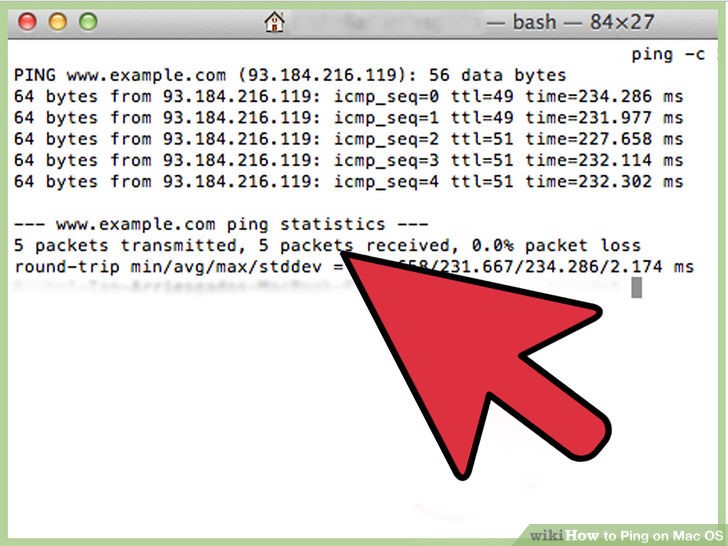
/command-window-ping-web_site-56a1ad4b3df78cf7726cf9a8.png)
MACBOOK COMMAND PROMPT PING HOW TO
Now that you know how to use the command, here are some interesting things you can do with it: If you’re curious about them, though, just type “ping /?” at the Command Prompt to see a list. But unless you’re doing some very specific types of troubleshooting, you won’t need to worry much about those advanced switches. For example, you can have it keep pinging a destination until you stop the command, specify the number of times you want it to ping, set how often it should ping, and more. Of course, like most commands, there are some advanced switches you can use to make it behave a bit differently. When the ping tool does not get a response from whatever devices you’re pinging, it lets you know that, too.Īnd that’s how to use ping at its most basic. We’re also getting a normal response from it.

The next four lines show the replies from each individual packet, including the time (in milliseconds) it took for the response and the time-to-live (TTL) of the packet, which is the amount of time that must pass before the packet is discarded.Īt the bottom, you’ll see a summary that shows how many packets were sent and received, as well as the minimum, maximum, and average response time.Īnd in the next image, we’re pinging the router on our local network using its IP address. That response shows the URL you’re pinging, the IP address associated with that URL, and the size of the packets being sent on the first line. In the image below, we’re pinging and getting a normal response. In the Run window, type “cmd” into the search box, and then hit Enter.Īt the prompt, type “ping” along with the URL or IP address you want to ping, and then hit Enter. Once you get to using the actual command, it works the same everywhere.
MACBOOK COMMAND PROMPT PING WINDOWS
But you can also use the ping command in Windows PowerShell, or in the Terminal app on macOS or any Linux distro. We’re going to use the Windows Command Prompt in our example here. RELATED: 10 Useful Windows Commands You Should Know How to Use Ping Pull up a terminal or Command Prompt window, and you can use ping on macOS, Linux, or any version of Windows. The time it takes packets to return to you can help you identify a slow connection, or if you’re experiencing packet loss.Īnd it pretty much doesn’t matter what operating system you’re using. This can help you determine if a network problem is somewhere on your local network, or somewhere beyond. You can test whether your computer can reach another device-like your router-on your local network, or whether it can reach a device on the Internet. When it gets the response, the ping tool shows you how long each packet took to make the round trip-or tells you there was no reply. Your computer sends several packets of information out to that device, and then waits for a response. You issue the ping command along with a specific URL or IP address. On a computer network, a ping tool is built into most operating systems that works in much the same way. You will see similar results as in the window above.Ping comes from a term used in sonar technology that sends out pulses of sound, and then listens for the echo to return. For example, simply type in ping in the command prompt window and press ENTER button on your keyboard to initiate the ping utility. In order to initiate the ping utility, you will need an IP address or a domain name that you want to test your connectivity to.When troubleshooting a problem, you can use the ping command to send an ICMP echo request to a domain name or an IP address.

The ping command is used to test the connectivity between two machines.


 0 kommentar(er)
0 kommentar(er)
